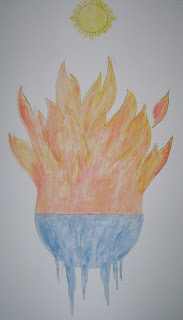Montessori training
centers refer to any local educational requirements as the “public school
curriculum”. I personally refer to the term “local educational requirements” to
incorporate not only the public school curriculum, but any other requirements
made on homeschools or private schools, as well as the requirements of the
particular homeschool or private school. For homeschools, this area might
include family studies, areas that the family finds important or critical,
faith formation and the like.
Within the school
setting as well as within the family for homeschool requirements that are not
family-based, encourage the child to help create the material needed; or utilize
resources on hand to learn the required skill. This does not need to be
elaborate; however it could lead into a strong area of personal interest for a
particular child.
You are likely to find that by the end of 3rd and
6th grades, a child has already learned most or all of the public
school curriculum either directly through the Montessori materials, or through their
own personal studies. This occurrence is precisely why Montessori albums are
not adjusted for the public school curriculum – nor should Montessori teachers get too caught up with local educational requirements -- keys-based Montessori albums provide what
is developmentally appropriate for all or most children; the public school
curriculum (and albums that provide far above and beyond the keys) is typically imposed from the outside and may or may not be
appropriate for ALL children.
Non-keys-based albums can be useful, if you discern what is a key and what is ok for not every child in a particular environment to do. If every child had to do everything, there would be no more time for personal studies!
And children that do personal studies - can pull in a wide variety of resources - especially non-Montessori ones! More in another Montessori Nugget!











